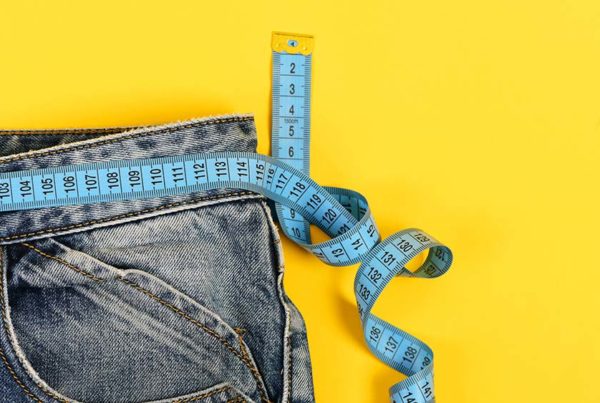
Forget the ‘Five Food Groups.’ Here are the two foods that spark the most fat-burning.
Diets have not stopped the global explosion of the overfat pandemic because they are typically unhealthy, and don’t match our individual needs. To personalize the process of burning off excess body fat, we each must match the selection of natural foods to our unique metabolic requirements.
First, the foods to avoid are a priority, because even if we eat the two foods that are key to fat-burning, our efforts will fail if . This group is junk food.
Beyond this, the two key foods to eat are fat and protein.
We’re all individuals and it’s up to each of us to find the right combination of foods for our particular needs, but as the years pass, the human body and metabolism changes. So we must adjust our eating habits to reflect these factors if we want to maintain great fat-burning for a lifetime.
That first step of eliminating junk food from the diet is followed by replacing it with the two key healthy natural foods that support our body and brain to improve metabolism.
After learning what can’t be consumed, many people ask “what can I eat? Of course, there are plenty of natural food choices to fill the void, items that are healthy and strongly promote fat-burning. The first food group is fat.
Fat!
No, fat is not a four-letter word. Eating natural fats is vital for optimal health and fitness. In particular, consuming fat promotes fat-burning — but only when consumed without junk food! Otherwise, insulin promotes more storage of fat, and at the same time prevents fat-burning — so body fat accumulates.
Natural fats, including certain oils, are those that occur in nature and are unprocessed. These include all fats from natural meats and seafood — beef, pork, fish, lamb, etc. — the fats from egg yolks and dairy, including butter and cream, and those from olive and coconut oils. Many other foods like nuts and seeds contain oils.
However, most processed fats should be avoided, including vegetable oils such as corn, peanut, canola, sunflower, safflower and soy. These are mainly omega-6 fats. Also, trans fat or any hydrogenated oil should be avoided.
A diet containing 30 percent fat was a standard recommendation for many years by even the most conservative professional groups. Yet the social cry for low- and no-fat was stronger, enough to obscure the science. Today, this upper limit on fat has essentially been lifted, as even saturated fat, which was once thought to be the worst, demonstrates health benefits. Yet, fat phobia still lingers on in the minds of many.
By significantly reducing junk food, adding much of those calories back in the form of fat calories is best for most people — the result is often referred to as a high-fat diet. However, it’s not really excess fat.
While the need for fat in our diets must be personalized, one thing is clear: We all require judicious amounts. It’s how the earliest humans survived and thrived so well. This range of healthy fat intake is based on metabolism, caloric needs, aerobic status, body size, and other health and fitness factors. Those who avoid junk food and have lowered their carbohydrate intake typically migrate to higher, rather than lower, amounts of fat because of their natural metabolic requirements.
In general, excess fat in a meal would be considered above 40 grams, which can have adverse effects. This amount is much higher than a breakfast of four eggs with 4 slices of bacon, or a big fatty rib-eye steak for dinner.
Protein
In addition to natural, healthy fats that trigger the metabolism to burn more fat, protein is important too, and needs should be moderate. This second food group helps fill the void left by eliminating junk food. It comes primarily from eggs, dairy, meat and fish with nuts and seeds containing modest amounts. Protein is particularly important for supporting muscles, especially aerobic muscles where fat is burned.
Protein foods are necessary to help balance fats, stabilize blood sugar and insulin, regulate nutrients and hormones, for digestion, nervous-system maintenance, building new cells throughout the body and fueling the immune system, among other functions.
While protein intake should also be personalized, the best guideline is that intake should be between 1-2 grams per kilogram of body weight. This can be usually accomplished by consuming 20-40 grams of protein in each meal or substantial snack.
Those who are in ketosis (carbohydrate intake around 50 grams a day or less), may be at the low end of this protein range as ketogenic eating reduces caloric needs even for healthy foods.
Whether we’re trying to develop strength, build more muscle, or maintain fitness, the International Society of Sports Nutrition recommendations include 1.4-2.0 grams of protein/kg body weight/day; those performing strength-training sports, 2.3-3.1 grams/kg/day, or more. So, an active, healthy 160-pound person may require upwards of 170 grams per day.
Here are some examples of daily protein needs and their foods:
- For an intake of 128 grams: three eggs and cheese at breakfast, a salad for lunch with a hefty serving of turkey, and salmon for dinner.
- For an intake of 106 grams: two eggs for breakfast, a chef’s salad for lunch, and a sirloin steak for dinner.
- For 90 grams of protein: two eggs at breakfast, tuna salad for lunch, and lamb for dinner.
For those requiring more protein than food provides, supplementing the diet with powdered egg white (or whole egg) can work well. This product is usually less processed, highly digestible, and easy to incorporate in shakes and recipes. Whey protein powder is also useful, but choose the concentrate form not the highly processed isolate or hydrolyzed forms, and avoid those with added sugar, flavorings, or other unnatural ingredients.
Personalizing Food Intake
Rather than following a diet, which is the opposite of personalizing food intake, we can do what our ancestors have always done — use our instincts to guide how much and which foods to eat. It’s relatively easy when we rely on the signs and symptoms associated with how we feel. Indications such as hunger, low energy, fullness, sleepiness after meals, intestinal bloating and others are very meaningful — they may mean we have consumed excess carbohydrates, natural or processed, making us carbohydrate intolerant.
To help people accomplish this I developed the Two-Week Test (and a separate vegetarian test). The first step of this test has already been discussed — eliminate all junk food. The next part helps you determine how much natural carbohydrate can be consumed.
In addition to including healthy fats and proteins to your daily menu, natural plant foods are important too. These include a wide array of vegetables and fruits. The exceptions are higher-carb items: avoid potatoes and corn, and watermelon, bananas, grapes, pineapple and dried fruits, and fruit juice.
We often hear about the “Five Food Groups” but in the world of fat-burning there are really only two — fat and protein. Supporting these with healthy plant foods will help stoke your fat-burning system, supporting a lifetime of health, fitness and optimal human performance.







